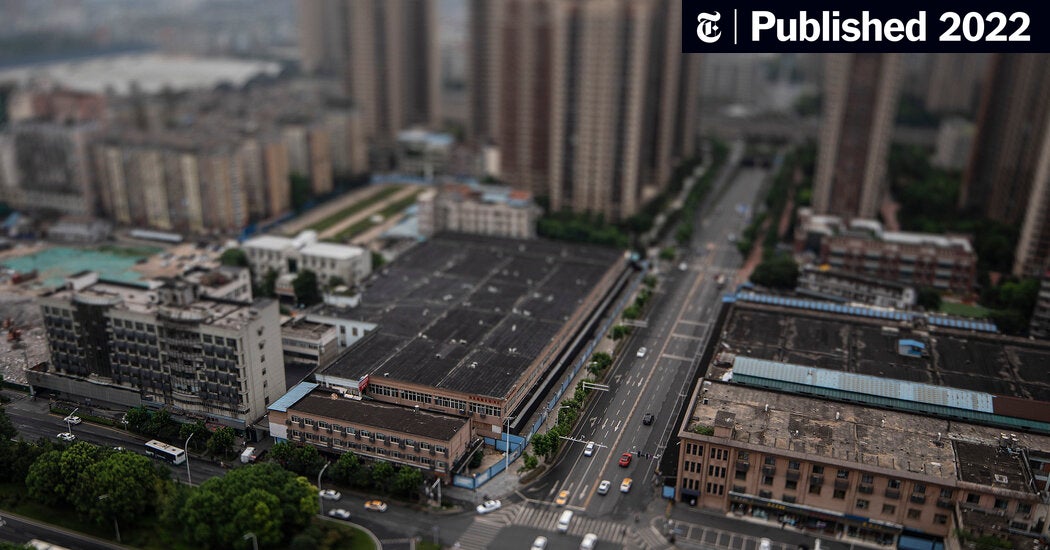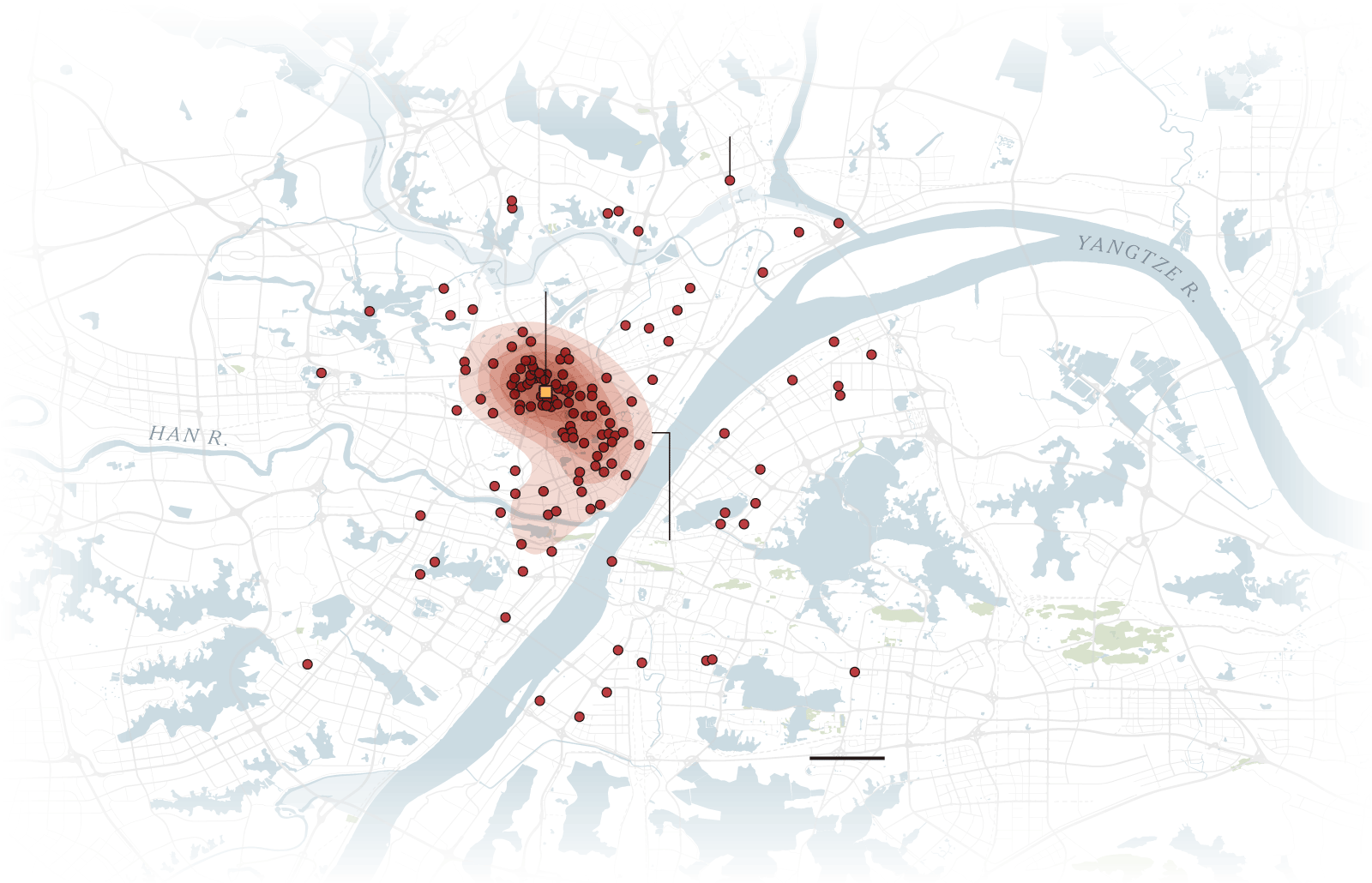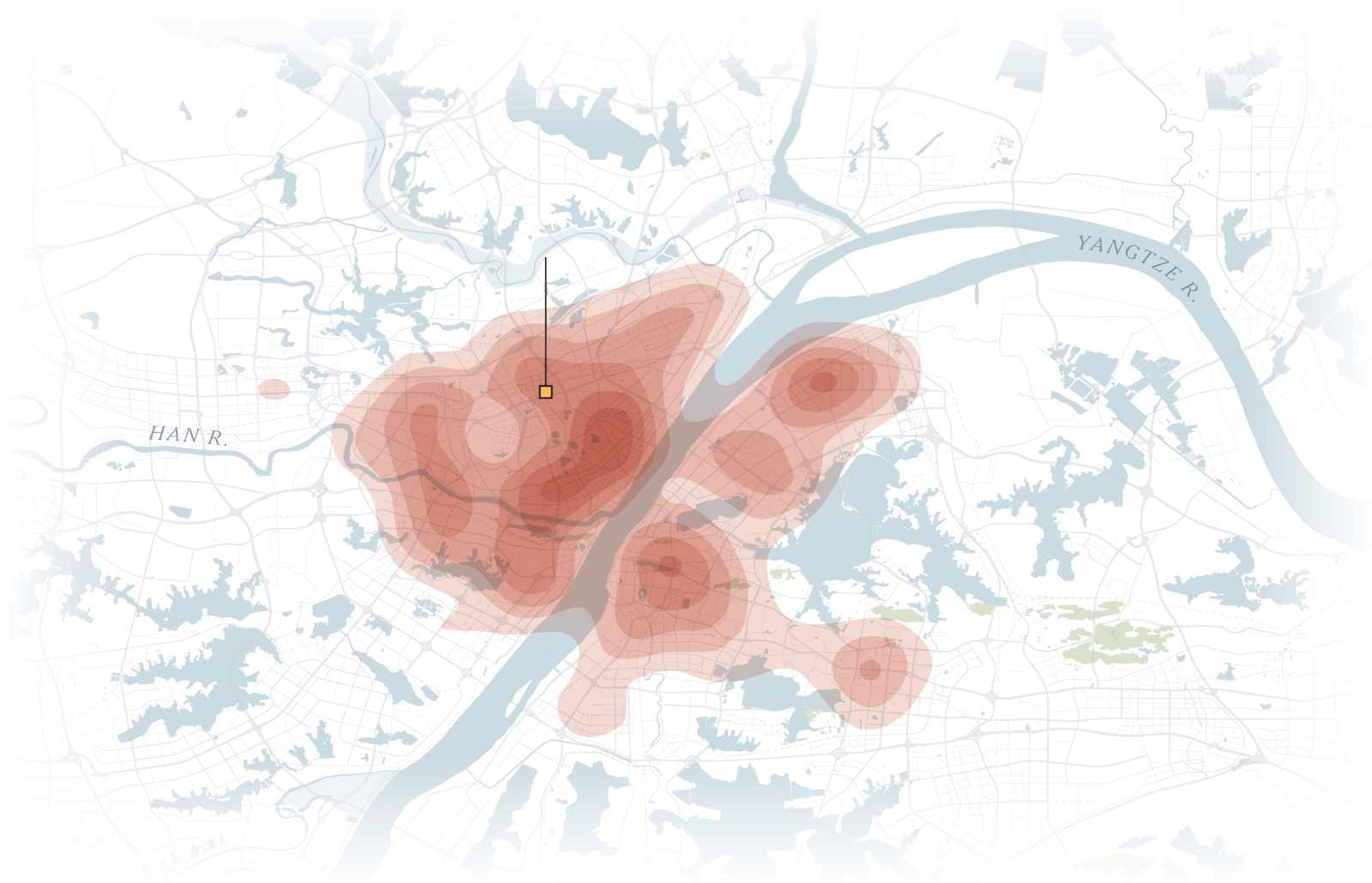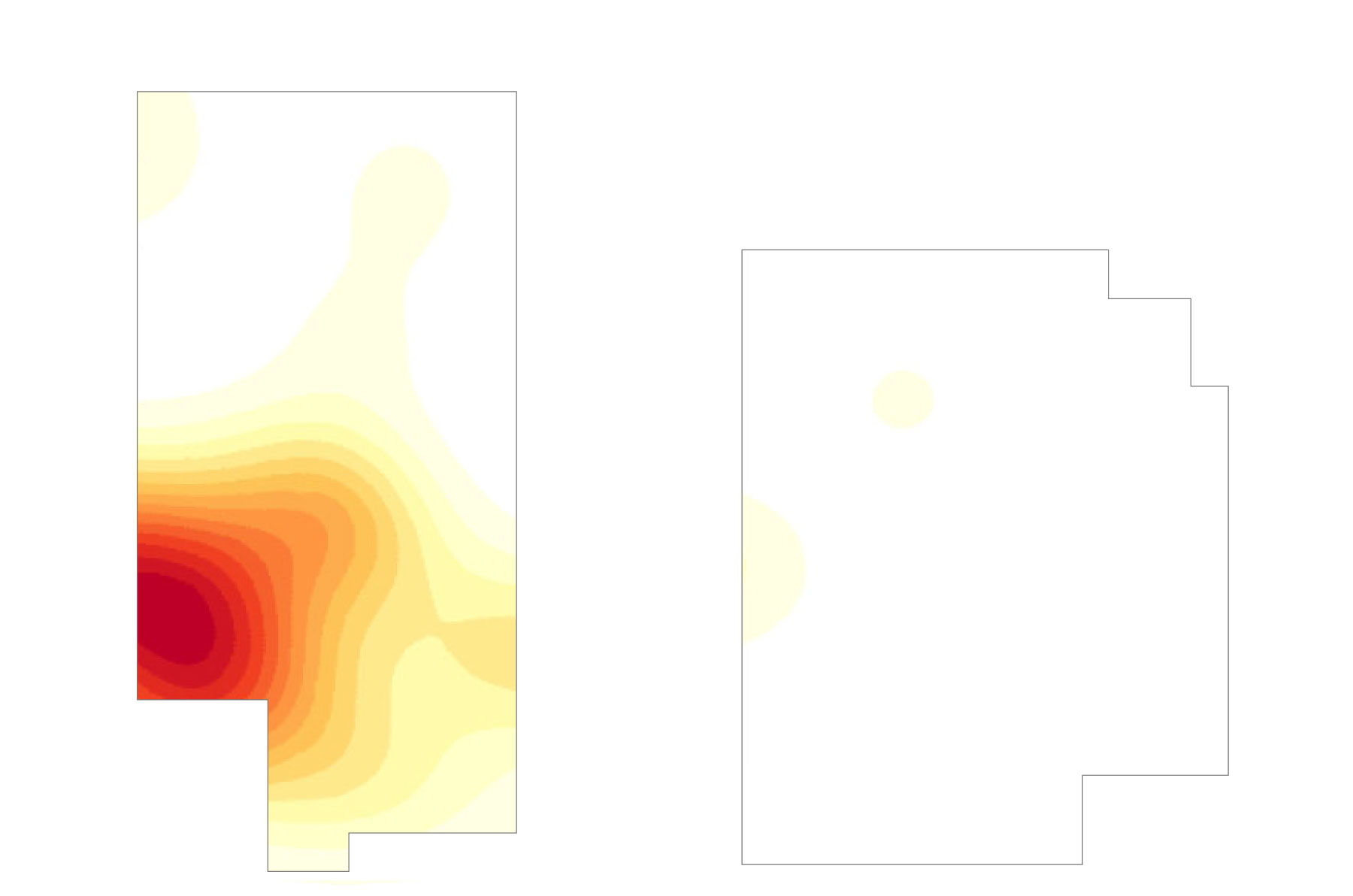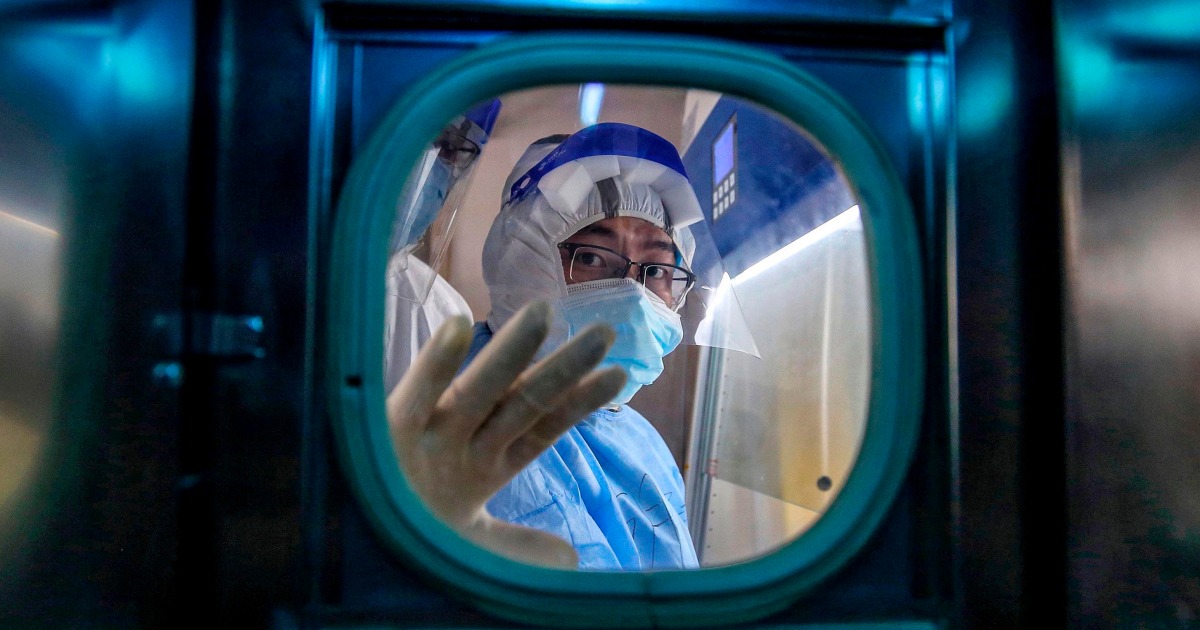The multi-national team of authors of two studies released Saturday (150 pages, caveat: not yet peer-reviewed) concluded that the coronavirus was very likely present in live mammals sold at the Huanan Seafood Wholesale Market in late 2019 and suggested that the virus spilled over into people working or shopping there on two separate occasions.
A third study was released on Friday from a Chinese group that had swabbed walls, floors and other surfaces inside the market, as well as meat still in freezers and refrigerators, right after authorities had closed the market, though no live animals remained there. They reported that the Huanan market samples included two evolutionary branches of the virus, known as lineages A and B, both of which had been circulating in early COVID cases in China. Earlier evidence had suggested that the market was only linked to lineage B, and therefore couldn’t be responsible for the initial outbreak of lineage A.
The studies together suggest at least two spillover events occurred at the market, at least one for each lineage.
press reports:
Scientists released a pair of extensive studies Saturday that point to a market in Wuhan, China, as the origin of the coronavirus pandemic. Analyzing data from a variety of sources, they concluded that the coronavirus was very likely present in live mammals sold in the Huanan Seafood Wholesale...

news.yahoo.com
Two new studies say the virus was present in animals at the Huanan seafood market in 2019.

www.nytimes.com
two of the papers:
Understanding the circumstances that lead to pandemics is critical to their prevention. Here, we analyze the pattern and origin of genomic diversity of SARS-CoV-2 early in the COVID-19 pandemic. We show that the SARS-CoV-2 genomic diversity prior to February 2020 comprised only two distinct...

zenodo.org
Geographical clustering of the earliest known COVID-19 cases and the proximity of positive environmental samples to live-animal vendors suggest that the Huanan Seafood Wholesale Market in Wuhan was the site of origin of the COVID-19 pandemic.

zenodo.org
“It’s an extraordinarily clear picture that the pandemic started at the Huanan market,” said Michael Worobey, an evolutionary biologist at the University of Arizona.
“It’s very convincing,” said Dr. Thea Fischer, a public health researcher at the University of Copenhagen, who was not involved in the new studies. The question of whether the virus spilled over from animals “has now been settled with a very high degree of evidence, and thus confidence.”
But others pointed to some gaps that still remained. The new papers did not, for example, identify an animal at the market that spread the virus to humans.
The core info comes from a group of WHO researchers pinning down the location of the first 164 cases of COVID-19 in Wuhan over the course of December 2019. The highest density of December cases centered around the market — a relatively tiny spot in a city of 11 million people. Those cases included not just people who were initially linked to the market, but others who lived in the surrounding neighborhood.
The next 737 cases that followed emerged further and further from the market. The researchers ran tests that showed it was extremely unlikely that such a pattern could be produced merely by chance.
The study on collected tissues points to live animals. The researchers reconstructed the floor plan of the Huanan market based on the WHO report, the leaked Chinese CDC study and other sources. They then mapped the locations of positive environmental samples, finding that they clustered in the area where live animals were sold. Strikingly, five of the samples came from a single stall. That stall had been visited in 2014 by one of the co-authors of the new studies, Edward Holmes, a virus expert at the University of Sydney. On that trip, he had taken a photograph of a cage of raccoon dogs for sale at the time.
Below is the floor map of the market. The lower left area (red) is where live animals had been caged.
Kristian Andersen, a virus expert at the Scripps Research Institute in La Jolla, California, and the senior co-author of one of the new studies, said it was important to figure out where the wild mammals for sale at Huanan came from, and to look for evidence of past outbreaks in those places. It’s possible, for example, that villagers at the sources of that wildlife still carry antibodies from exposures to coronaviruses.
“If I had to say what would be most helpful to do now, it would be those types of studies,” he said.
--------
If you cling to “accidental lab leak” theory then I guess you could argue that it was leaked specifically to lab people who really were avid shoppers in the market, 20 milkes away, and they spread it more to shopping buddies than to coworkers. I have no reason to believe that would make any sense, though.
If you cling to “intentional lab-created bioweapon” theory then I guess you could argue that it was designed to first take out people in the market. That makes even less sense.


